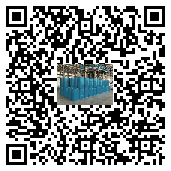The "Invisible Blender" in Floor Coatings - The Secret of Dispersant Application
Behind the smooth, bright and evenly colored floors in shopping malls, garages and factory workshops that we see
every day, there are countless chemical materials working together in precision. Among them, dispersants, as an
inconspicuous but crucial additive, are like invisible blenders, silently guaranteeing the performance and beauty of
floor coatings.
Dispersants: The key to solving the "clustering" of pigments
The color and hiding power of floor coatings mainly come from pigments, and these tiny pigment particles have a
natural tendency to "cluster". In the process of coating production, if the pigment particles gather together, they will
form clumps that are difficult to disperse, which will directly lead to uneven color, sedimentation and stratification,
and obvious brush marks during construction, which will seriously affect the final effect of the floor.
The core function of the dispersant is to break this "clustering" phenomenon. Its molecular structure is like a "double-sided
tape": one end can firmly adsorb on the surface of the pigment particles to form a stable adsorption layer; the other end is
compatible with the solvent or resin in the paint, separating the aggregated particles like a "small brush" and allowing them
to be evenly suspended in the paint system. This dispersion effect not only makes the paint color full and consistent, but
also reduces the viscosity of the paint, making the brushing smoother and more labor-saving during construction.
Different scenarios, dispersants have different focuses
The application scenarios of floor coatings vary greatly, from humid underground garages to heavily loaded industrial
workshops, and the performance requirements of dispersants are also different.
In ordinary floors in home decoration or commercial places, the primary task of dispersants is to ensure color uniformity
and storage stability of the paint. Anionic dispersants are often used in such scenarios. They can keep the pigment particles
dispersed through charge repulsion, so that the pure color or pattern of the wall always remains bright and consistent, and
it is not easy to precipitate even if the paint is stored for several months.
In industrial floors, especially workshop floors that need to withstand mechanical wear and chemical corrosion, the selection
of dispersants focuses more on the synergistic effect with other additives. At this time, non-ionic dispersants are often more
popular. They will not conflict with curing agents, preservatives, etc. in the coating, and can maintain the dispersion state of
pigments in high temperature and high humidity environments, ensuring that the floor coating will not fade or peel during
long-term use.
For water-based floor coatings that pursue environmental performance, special water-based dispersants are required. This
type of dispersant can form a stable dispersion system in water, avoiding VOC (volatile organic compound) pollution caused
by traditional solvent-based dispersants, which not only meets environmental protection requirements, but also ensures the
construction and durability of the coating.
How dispersants improve the "combat effectiveness" of floors
In addition to ensuring the appearance, dispersants also significantly improve the practical performance of floors. First of all,
evenly dispersed pigment particles can allow the coating to form a denser coating, enhance the wear resistance and impact
resistance of the floor, and reduce damage caused by vehicle rolling or heavy object impact. Secondly, well-dispersed paint
shrinks more evenly during the drying process, which can reduce the risk of cracking and peeling and extend the service life
of the floor.
During the construction process, the paint with the addition of suitable dispersants has better fluidity. Whether it is rolled,
brushed or sprayed, it can more easily form a smooth coating and reduce the generation of bubbles and pinholes. This not
only reduces the difficulty of construction, but also saves the amount of paint and reduces the cost of the project.
The "golden rule" for selecting dispersants
Although dispersants have many benefits, they are not omnipotent. When choosing, you need to follow the "matching
principle": first consider the type of pigment. Organic pigments and inorganic pigments have different adsorption capacities
for dispersants, so they need to be selected in a targeted manner; secondly, combine the film-forming substances of the
coating to ensure that the dispersant is compatible with resins, solvents, etc.; finally, it is necessary to consider the
construction environment and use requirements. For example, in low-temperature environments, you need to choose a
dispersant with good frost resistance, and in chemical workshops, you need to consider the corrosion resistance of the
dispersant.
As floor coatings develop towards high performance and environmental protection, dispersants are also constantly upgrading.
With stronger adsorption and dispersion efficiency, the new super dispersant can handle finer nano-scale pigments and provide
support for high-end floors that are super wear-resistant and super weather-resistant. In the future, with the advancement of
technology, this "invisible blender" will play an important role in more scenarios, making every inch of the floor under our feet
more durable and more beautiful.


